12.5: Cubism (1907 – 1914)
- Page ID
- 31981
Starting around 1907 and peaking in 1914, Cubism was one of the most important art movements of the 20th century, still influencing artists today. At the turn of the 20th century, political, social, and innovations continued to change daily, and artists began to paint in a new style to reflect the struggles of life in the world around them, painting two-dimensional styles with cubes from multiple perspectives and giving the movement its name. Cubist artists painted the essence of their subjects in fragmented pieces forming multiple perspectives in one painting.
The father of Cubism is Pablo Picasso (1881-1973), yet in his first years of painting, he created works in a naturalistic manner, similar to other artists at the time. Au Lapin Agile (12.31) is an iconic painting of the Bohemian life in Paris at the turn of the century. Picasso painted in the flat style, yet the perspective with the three figures stacked slightly off each other at a table. The 1905 oil painting made cabarets famous. Chicago Picasso (12.34) is an outdoor sculpture by Picasso in Chicago, Illinois, and was the first large outdoor sculpture in downtown. The architect of the Daley Center project, where the sculpture lives, wrote a poem for Picasso and asked him to make a sculpture about the poem. The mammoth statue is 15.2 meters high, created with Picasso's classic distortion, the unusual face connected to the wing-like hair.
The Girl with a Mandolin (12.32) noted for the progressive elimination of a subject and pushing the boundaries of abstraction. The color palette is subdued, and he uses monochromatic colors for depth. In 1910, the painting approached the apex of the cubism period and was rectangles, squares, and circles. The Cubist period opened the door for abstracted geometric forms. Les Demoiselles d'Avignon (12.33) was a monumental change from the traditional depiction of females as he painted the flat, splintered figures all compressed into a small overlapping space.
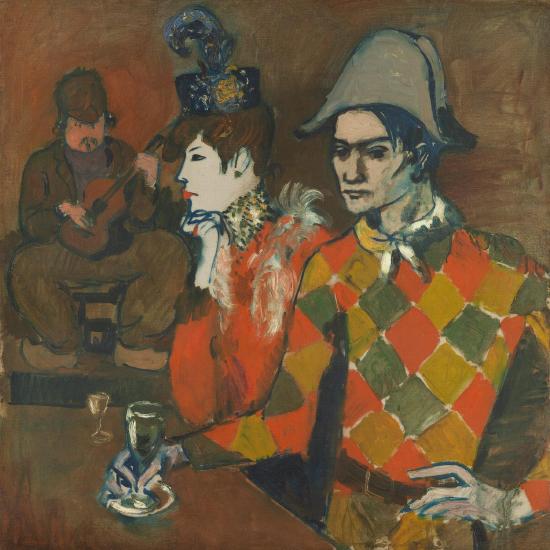
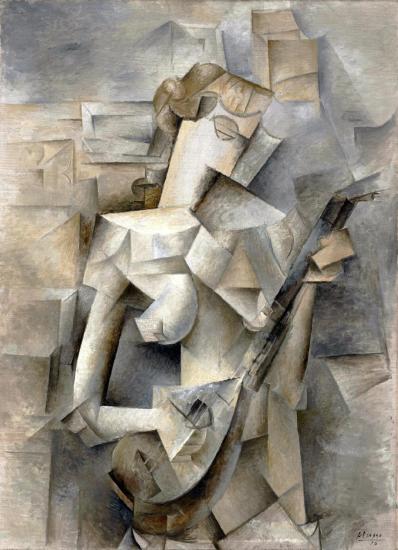
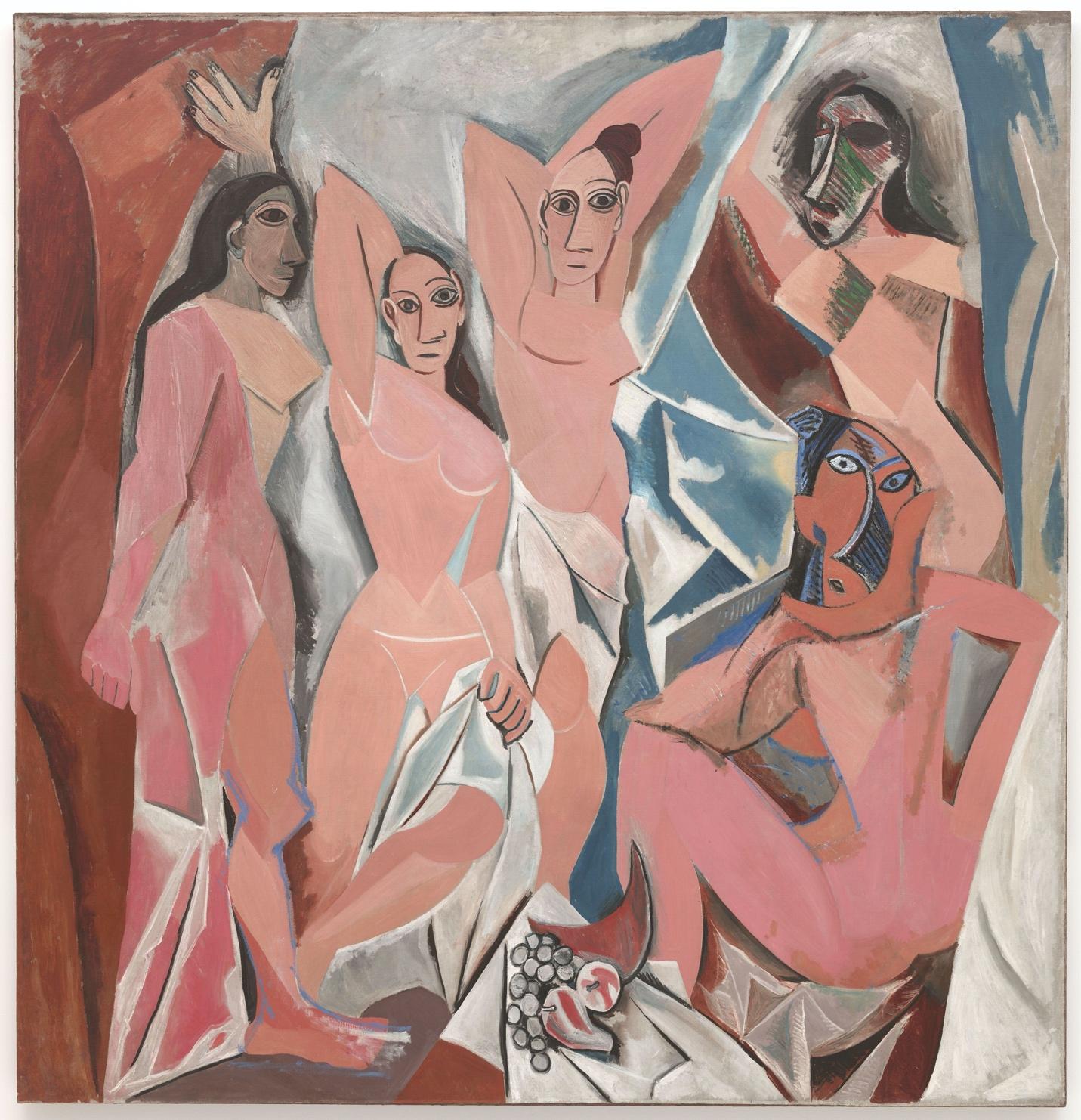
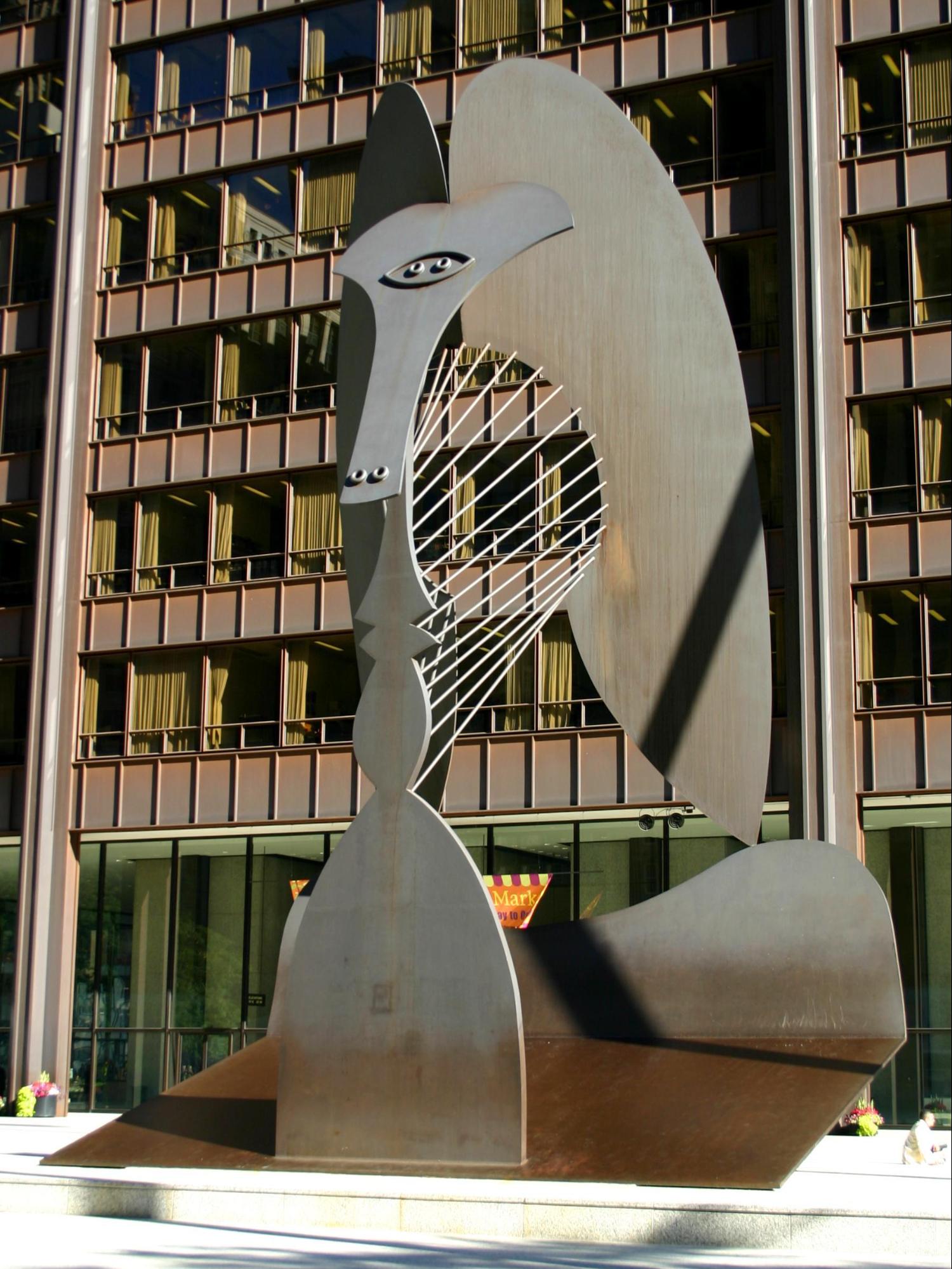
Georges Braque (1882-1963), a French painter, started painting with the style of Fauvism, then working with Pablo Picasso to develop Cubism; both men depicting images are closely related portrayals. He studied how different perspectives and reflections of light influence a painting moving him to use these elements to create a flat look yet give his fragmented geometric forms a three-dimensional feel. Braque's close association with Picasso was interrupted by World War I when he enlisted in the army, was severely injured in battle. Violin and Candlestick (12.35) demonstrated Braque's method of fracturing and reconstructing objects in space. He used earth-toned colors in the painting and black lines to define each geometric form. Still Life on a Table (12.36) was a common theme, the table drawer and its knob at the bottom of the painting. Braque used mottled brushstrokes with deep browns and grays, heavy black lines defining the shapes.
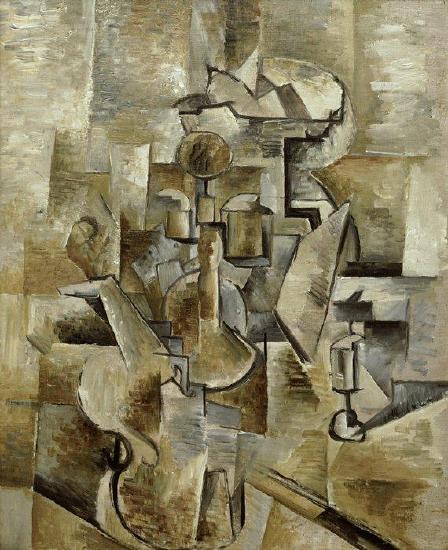
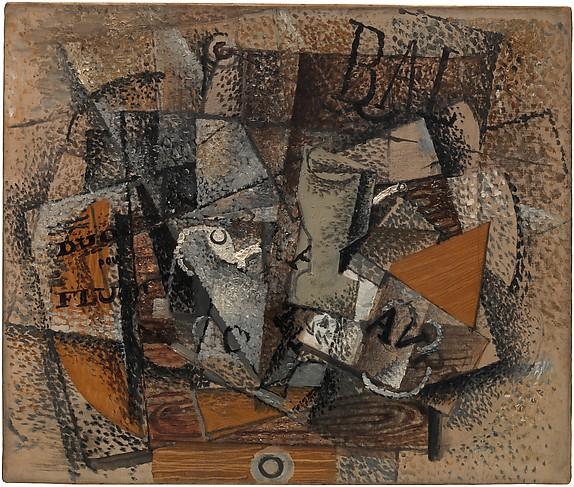
Juan Gris (1887-1927) was a Spanish painter and sculptor from Madrid who lived in France most of his adult life. One of his most famous paintings is Portrait of Picasso (12.37) he painted in 1912 based on the analytical cubist style and monochromatic colors. Gris then became interested in colors and used bold, bright colors in his cubism art, the Violin and Checkerboard (12.38). Later in his painting career, Gris took his art even simpler, blurring the distinction between the background and the object or figure.
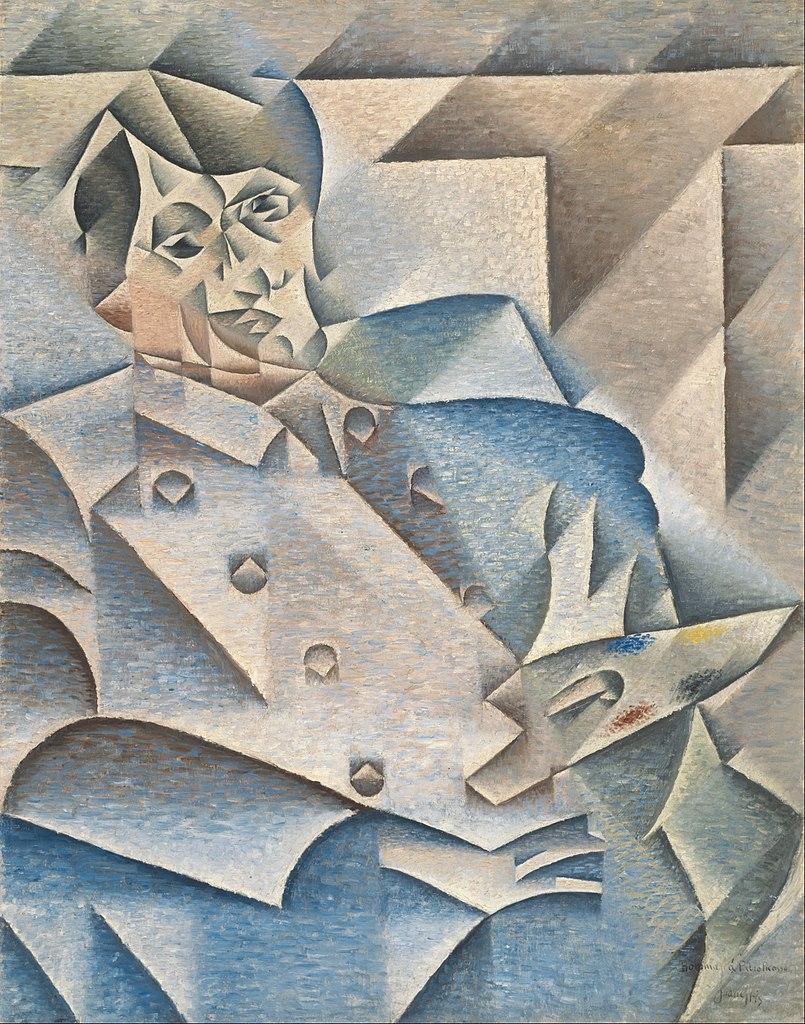
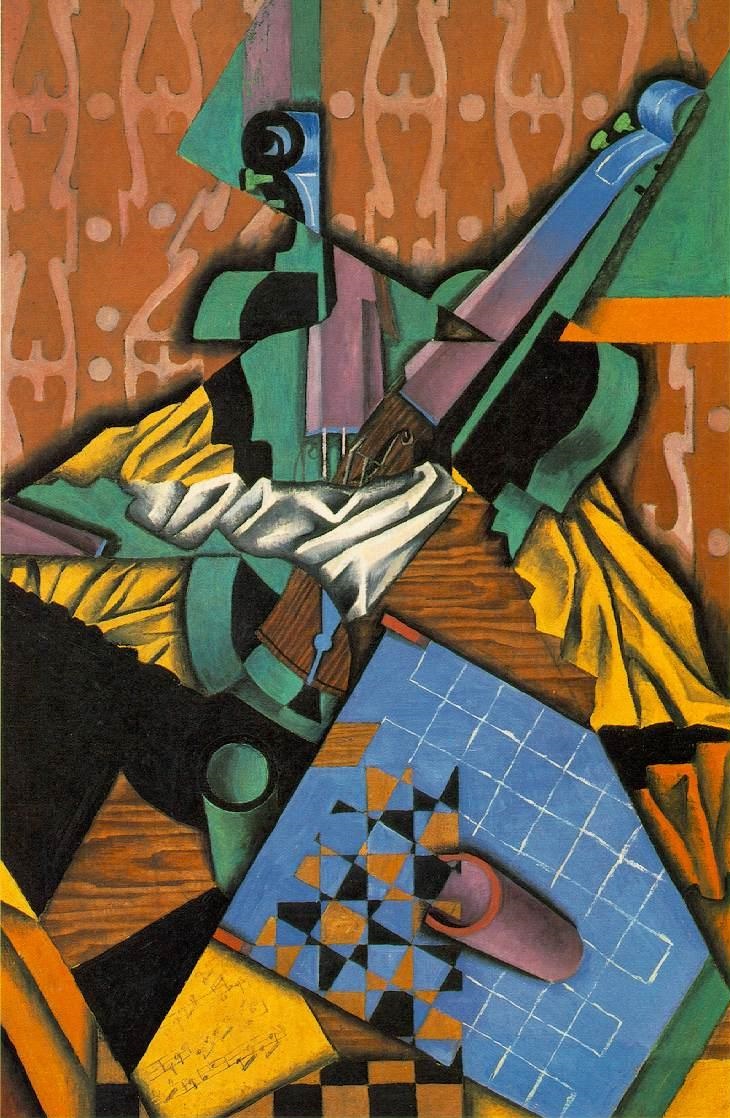
Another contributor to Cubism was Fernand Léger (1881-1955), a French painter, sculptor, and filmmaker. Léger took Cubism to the next phase and confidently simplified his handling of the contemporary topic, which some say is the precursor to pop art. World War I had a profound effect on his work, and he spent two years on the front lines. Léger sketched in the trenches, drawing anything in front of him, including airplanes, artillery, other soldiers, and the landscape. The City (12.39) is an example of his "mechanical period" when he painted objects with the appearance of sleek, machine-like forms. Léger produced mechanical looking work after the war, referring to streamlined equipment, household goods, and other new inventions. His portraits show frontal figures as in Mother and Child (12.40), with firm outlines and smoothly combined colors, almost appearing automated in nature.
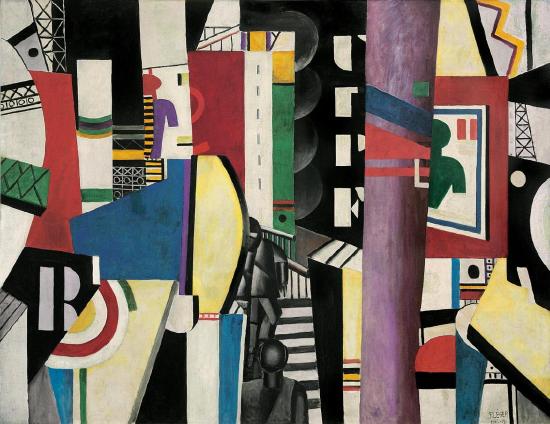
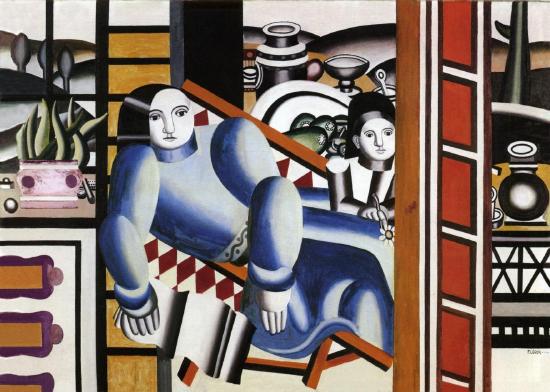
Maria Blanchard (1881-1932) was born in Spain; however, she suffered from multiple physical problems from birth. In Madrid, she studied with different artists, especially learning the concepts of Cubism espoused by Juan Gris. After the war, Blanchard moved to Pairs and continued to refine her concepts of Cubism. As her health deteriorated, her work, including Still Life with Red Lamp (12.41), became emotional, and she used exaggerated colors and clashing shapes.
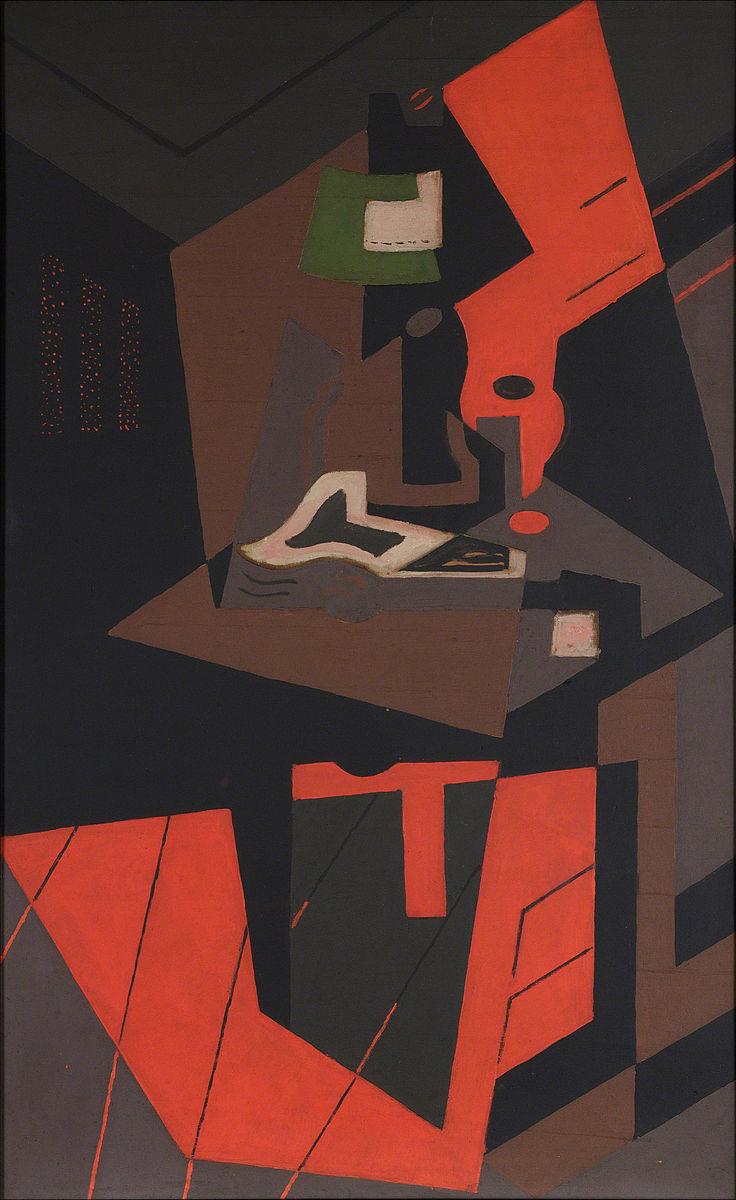
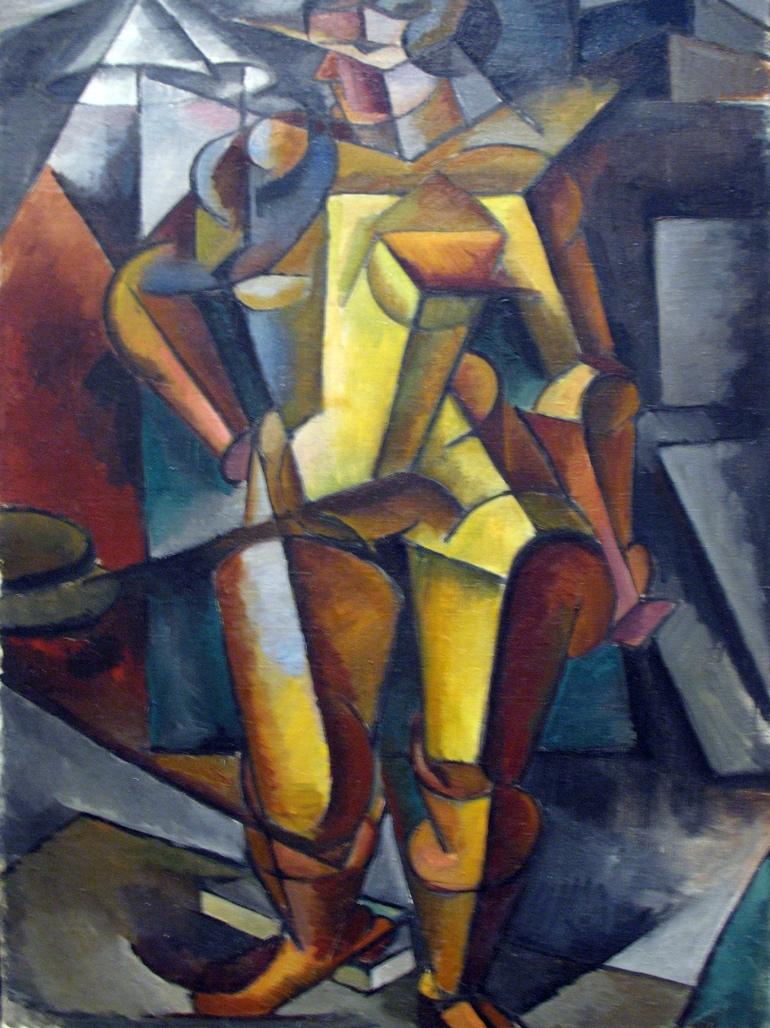
Lyubov Popova (1889-1924) was born in Russia, studying art privately, then traveling to learn different methods and styles. Russian icons heavily influenced her work, and many also believe Fernand Leger and his tubular forms shaped her ideas. The Model (12.42) is divided by the heavy black lines of Cubism, the rounded geometric forms of cones and tubes along with intersecting angles, form the shape of the model. Popova died at the early age of thirty-five, limiting the work she produced.


